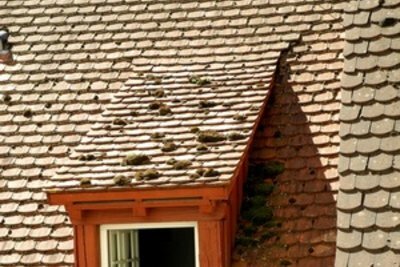Use plastic roof panels
Roofs can not only be covered with slate, but also with plastic roofing panels that look very similar. These are often reinforced with glass fibers and can sometimes hardly be distinguished from real slate. What should you pay attention to when using the panels?

The advantages of these roof panels are their lower weight, weather resistance and breaking strength. The panels can therefore be processed more easily than classic slate. However, the use of plastic places different demands on the Assembly.
Protect roof panels from deformation and damage
- Problems can already arise during storage, because direct sunlight can deform the individual plastic roof panels. Especially when these are wavy, the embossed pattern can be lost. You should therefore cover the panels and store them in such a way that they are not subject to mechanical loads.
- The physical properties of the panels also play a role during assembly. Because even if this is already on the roof are laid, the material expands slightly when exposed to sunlight and contracts slightly when it is cold.
- It is therefore important that you make the hole through which the screw goes a little larger when you screw the plates. Ideally, it should be about 3 mm larger than the diameter of the shaft of the screws. Nevertheless, the holes should of course not be larger than the head of the screws, otherwise correct fastening is no longer possible. You can use washers here if the head of the screws is too small.
- The panels themselves should then be laid in such a way that water running down from above cannot get between the plastic coverings. So you start against the wind direction at the lower end of the roof and then continue laying up to the top of the roof. If the individual units overlap, they can also expand somewhat without losing their weather-protection effect.
Laying plastic balcony boards
There is another alternative when it comes to covering a balcony, and that ...
The right tool for plastic
- The plastic roof panels are easy to care for after they have been laid, but you must make sure that no cracks appear during assembly. If you test a hole and find that the hole is cracked, then you should Use a different drill - ideally a plastic drill - because individual cracks can later appear enlarge.
- You can use a hand-held circular saw or a jigsaw to separate the panels. The teeth of the saw blade should be rather fine in order to achieve an optimal cut.
- Make sure that no canting occurs. Sharp edges on the roof panels can be sanded off afterwards to avoid injuries during assembly.
How helpful do you find this article?



